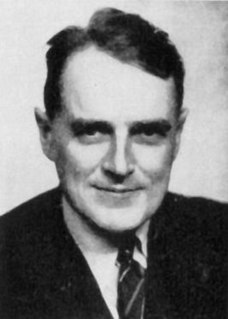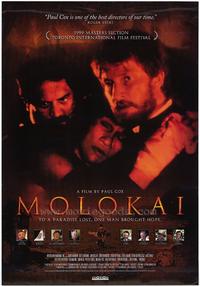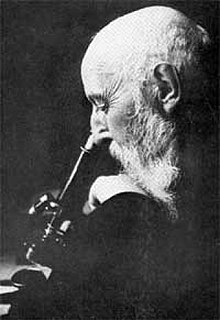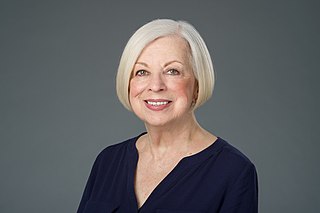Related Research Articles

Father Damien or Saint Damien of Molokai, SS.CC. or Saint Damien De Veuster, born Jozef De Veuster, was a Roman Catholic priest from Belgium and member of the Congregation of the Sacred Hearts of Jesus and Mary, a missionary religious institute. He was recognized for his ministry, which he led from 1873 until his death in 1889, in the Kingdom of Hawaiʻi for people with leprosy, who lived in government-mandated medical quarantine in a settlement on the Kalaupapa Peninsula of Molokaʻi.

Murlidhar Devidas Amte, popularly known as Baba Amte, was an Indian social worker and social activist known particularly for his work for the rehabilitation and empowerment of people suffering from leprosy. He has received numerous awards and prizes including the Padma Vibhushan, the Dr. Ambedkar International Award, the Gandhi Peace Prize, the Ramon Magsaysay Award, the Templeton Prize and the Jamnalal Bajaj Award. He is also known as the modern Gandhi of India.

Henry George Reginald Molyneux Herbert, 7th Earl of Carnarvon,, was a British peer and racing manager to Queen Elizabeth II from 1969. He was the only son of The 6th Earl of Carnarvon by his wife Catherine Wendell. From his birth to September 1987, he was known by the courtesy title Lord Porchester. He owned the family seat, Highclere Castle.

A Burnt-Out Case (1960) is a novel by English author Graham Greene, set in a leper colony on the upper reaches of a tributary of the Congo River in Africa.

Ben Hur is a 2003 American-Canadian animated drama film based on the 1880 novel Ben-Hur: A Tale of the Christ, by Lew Wallace. It is the fourth film adaptation of the novel.

Kalaupapa National Historical Park is a United States National Historical Park located in Kalaupapa, Hawaiʻi, on the island of Molokaʻi. Coterminous with the boundaries of Kalawao County and primarily on Kalaupapa peninsula, it was established by Congress in 1980 to expand upon the earlier National Historic Landmark site of the Kalaupapa Leper Settlement. It is administered by the National Park Service. Its goal is to preserve the cultural and physical settings of the two leper colonies on the island of Molokaʻi, which operated from 1866 to 1969 and had a total of 8500 residents over the decades.

Lieutenant-Colonel Claude Cunningham Bruce Marshall, known as Bruce Marshall was a prolific Scottish writer who wrote fiction and non-fiction books on a wide range of topics and genres. His first book, A Thief in the Night came out in 1918, possibly self-published. His last, An Account of Capers was published posthumously in 1988, a span of 70 years.

Matthew 8:2 is the second verse of the eighth chapter of the Gospel of Matthew in the New Testament. This verse begins the miracle story of Jesus cleansing a leper, the first of a series of miracles in Matthew.

Matthew 8:3 is the third verse of the eighth chapter of the Gospel of Matthew in the New Testament. This verse continues the miracle story of Jesus cleansing a leper, the first of a series of miracles in Matthew.

Molokai: The Story of Father Damien is a 1999 biographical film of Father Damien, a Belgian priest working at the Kalaupapa Leprosy Settlement on the Hawaiian island of Molokai. It was directed by Paul Cox.

Jesus cleansing a leper is one of the miracles of Jesus. The story is found in all three of the Synoptic Gospels: Matthew 8:1–4, Mark 1:40–45 and Luke 5:12–16.

The Leper of Saint Giles is a medieval mystery novel by Ellis Peters, set in October 1139. It is the fifth novel in The Cadfael Chronicles and was first published in 1981.
Wellesley C. Bailey (1846–1937) was the founder of international charity The Leprosy Mission. In India in the 1860s he witnessed the severe consequences of the disease and vowed to make caring for those with leprosy his life work. The Mission he established all those years ago is still active today.

William Carleton Irvine was a missionary, writer and the founding editor of the Indian Christian magazine.

The history of leprosy was traced to its origins by an international team of 22 geneticists using comparative genomics of the worldwide distribution of Mycobacterium leprae. Monot et al. (2005) determined that leprosy originated in East Africa or the Near East and traveled with humans along their migration routes, including those of trade in goods and slaves. The four strains of M. leprae are based in specific geographic regions where each predominantly occurs:

Kate Marsden was a British missionary, explorer, writer and nurse. Supported by Queen Victoria and Empress Maria Fedorovna she investigated a cure for leprosy. She set out on a round trip from Moscow to Siberia to find a cure, creating a leper treatment centre in Siberia. She returned to England and helped to found Bexhill Museum, but she was obliged to retire as a trustee. Marsden's finances came under scrutiny as did her motives for the journey. She was however elected a fellow of the Royal Geographical Society. She has a large diamond named after her and is still celebrated in Siberia, where a large memorial statue was erected at Sosnovka village in 2014.

Victor Heiser was born Victor George Heiser in Johnstown, Cambria County, Pennsylvania. He was an American physician and author, and was known as Dr. Victor Heiser. He was a survivor of the Johnstown flood of 1889.

William Phileppus Ragsdale was a lawyer, newspaper editor, and translator of the Kingdom of Hawaii and popular figure known for being luna or superintendent of the Kalaupapa Leprosy Settlement. Elements of his life story influenced Mark Twain's 1889 novel A Connecticut Yankee in King Arthur's Court.
George Naʻea, was a high chief of the Kingdom of Hawaii, and father of Queen Emma of Hawaii. He became one of the first Native Hawaiians to contract leprosy and the disease became known as maʻi aliʻi in the Hawaiian language because of this association.

Bernice Gottlieb was an early leader in the trans-racial adoption movement in the United States. In later years, she led a residential real estate firm and authored several books, including one on adoption.
References
- 1 2 3 4 5 6 7 8 Greave, Peter (1976). The Seventh Gate. London: Maurice Temple Smith.
- ↑ "Apprehensions During the Week". The South Australian Police Gazette. June 29, 1910. p. 160.
- ↑ "Bogus Lottery". The Times of India. August 14, 1925. p. 5.
- ↑ "Leprosy Patient in a Troopship". The Manchester Guardian. September 1, 1947. p. 3.
- ↑ Bowen, Elizabeth (June 29, 1955). "Swashbuckler in India". The Tatler and Bystander. p. 743.
- ↑ "New Novels". The Times of India. August 24, 1958. p. 6.
- ↑ "Bursaries Awarded to Writers". The Times. December 11, 1967. p. 10.
- ↑ Lewis, Jeremy (May 27, 1976). "Moving Memoir". The Times. p. 10.
- ↑ Gould, Tony (May 13, 1976). "Life is sweet". New Society. p. 371.
- ↑ "Deaths". The Times. November 7, 1977. p. 30.